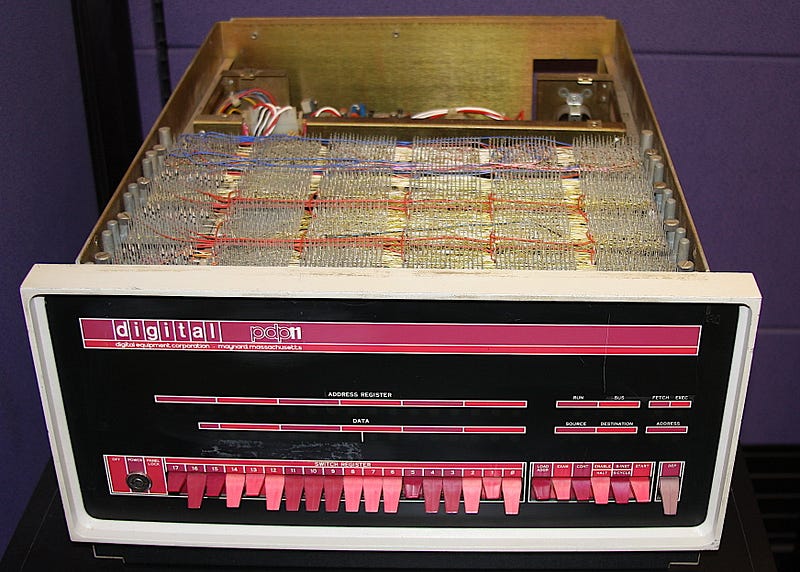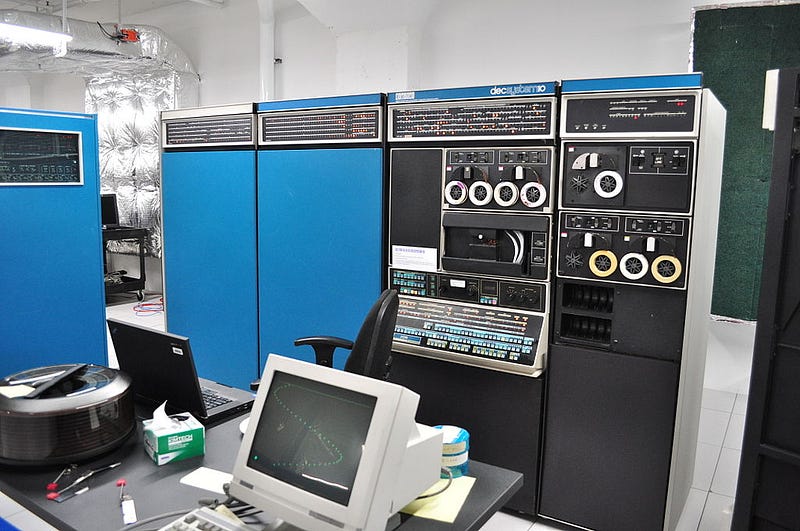Why Did the World's Second Largest Computer Company Collapse?
Written on
Chapter 1: The Rise of Digital Equipment Corporation
Digital Equipment Corporation (DEC), founded in 1957, was once a titan in the computing world, only to face a dramatic decline in the 1990s. If DEC is unfamiliar to you, it might astonish you to learn that by 1988, it was the second-largest computer company globally, generating an impressive $11.5 billion in revenue. Just a decade later, it was acquired, and its name faded into obscurity. This narrative chronicles the extraordinary ascent of DEC and its subsequent fall.
A Revolutionary Concept in Computing
In the 1950s, the commercial computing landscape was just beginning to take shape. IBM launched its mainframe computer in the early 1950s and soon dominated the large-scale computer market. However, MIT engineer Ken Olsen envisioned a different future. Alongside fellow engineer Harland Anderson at MIT’s Lincoln Laboratory, Olsen recognized the potential for interactive computing machines, contrasting with the batch-processing mainframes of the era. They aimed to create affordable machines for scientists and researchers.

Initially, the company was named "Digital Computer Corporation," but advisors encouraged them to avoid the term "computer" to attract investors. Thus, they adopted the name "Digital Equipment Corporation" and concentrated on selling electronic components. Their commitment to cost efficiency was evident when they chose to establish their base in a repurposed mill in Maynard, Massachusetts. By 1958, DEC successfully produced modules for circuit boards, essentially the core components of computers.
The Birth of the Minicomputer
DEC introduced its first computer, the PDP-1, in 1960, labeling it a "programmable data processor" to sidestep the stigma of the term "computer." Priced at $120,000, it was a fraction of the cost of most systems at that time, which often exceeded $1 million. This innovation paved the way for a new market segment: the minicomputer.
In 1965, DEC launched the PDP-8, which was not only advanced but also priced at just $18,500, leading to its status as the first commercially successful minicomputer. By 1968, DEC was the preeminent manufacturer in this burgeoning market. During this period, rivals such as Data General emerged, founded by former DEC engineers eager to capitalize on this new opportunity.

The PDP-11, launched in 1970, further accelerated DEC's growth, solidifying its position as a Fortune 500 company by 1974.
The Era of the "Super-Mini"
In 1978, DEC boldly entered competition with IBM by introducing the VAX (Virtual Address eXtension) line of 32-bit "superminicomputers." These machines were designed to challenge IBM's dominance, combining affordability, power, and a smaller footprint. Throughout the 1980s, DEC continued to enhance the VAX line while maintaining the production of the PDP-11, propelling the company to unprecedented success.
By the late 1980s, DEC was a technology giant, with its user society, DECUS, becoming the world's largest computer user community. The annual DECWorld trade show was a major event in the tech calendar. By 1988, DEC boasted revenues of $11.5 billion and over 120,000 employees, standing second only to IBM.

The Beginning of the Decline
While personal computers were still relatively new in the 1970s, they heralded a significant shift in the computing landscape. Following the successful launch of the Apple II, IBM released its own PC in 1981, paving the way for a booming clone market after the widespread availability of Microsoft's operating system.
In the late 1980s, Ken Olsen remained at the helm of DEC as the microcomputer revolution unfolded. The company attempted to enter this market with the Rainbow model, but it failed to gain traction. DEC's commitment to the declining minicomputer market left it vulnerable to emerging trends. It is widely believed that both DEC and Olsen underestimated the significance of microcomputing until it was too late.
Other miscalculations compounded the situation. DEC chose to compete directly with IBM in the data center sector, requiring substantial investments in infrastructure and personnel. Additionally, the company's decision to abandon open architecture in favor of protecting its VAX system alienated loyal customers. Its strategy of vertical integration—manufacturing all components in-house—made it less agile compared to more adaptable competitors.
In 1991, DEC recorded its first annual loss. Ken Olsen resigned as CEO in 1992, but the company's struggles persisted. By 1997, Intel acquired DEC's microprocessor division, and in 1998, DEC itself was bought by COMPAQ, ironically a competitor that had benefited from the very PC clones that contributed to DEC's downfall. Thus, Digital Equipment Corporation faded into history.
The Legacy of DEC
Despite its demise, DEC's legacy in information technology is profound. The company was instrumental in:
- The commercial adoption of Ethernet technology.
- The development of early versions of the C programming language and UNIX operating system for its PDP line.
- The widespread use of its operating systems like OpenVMS.
- The creation of DECnet, one of the initial standards for peer-to-peer networking.
- The invention of clustering, enabling multiple machines to function as a single unit.
- The advancement of the powerful 64-bit Alpha series of microprocessors.
- The development of Notes-11, an early form of online collaboration software.
- The creation of AltaVista, a pioneering internet search engine predating Google.
While Digital Equipment Corporation may no longer be in existence, its innovations in hardware, software, and networking have left an indelible mark on the computing industry.
Sources
Barron, Brenda. “The Tragic Tale of DEC, The Computing Giant That Died Too Soon,” Digital.com, Dec. 26, 2021.
“Digital Corporate History,” DECconnection.com.
Mark, David A. “Digital Equipment Corporation — the Decline,” MaynardLifeOutdoors.com, Feb. 5, 2020.